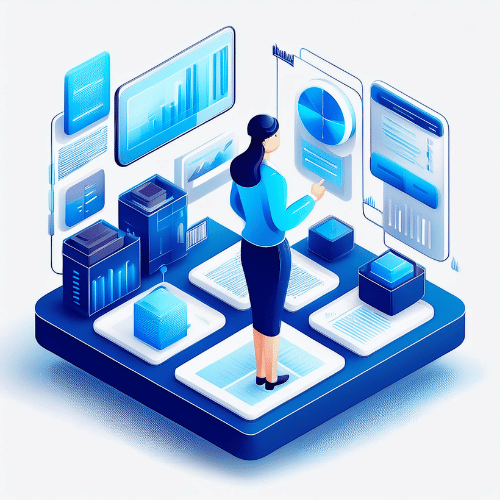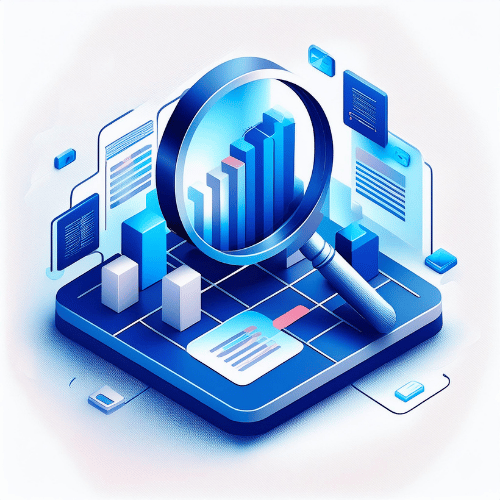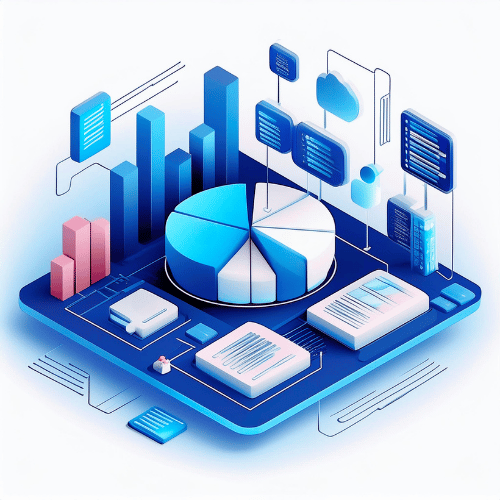The rise of Generative AI (GenAI) is reshaping the business landscape, with two-thirds of organisations now using these technologies. However, challenges remain in effective integration and ethical considerations. This blog explores Agentic AI workflows, where AI agents collaborate on complex tasks, enhancing productivity and overcoming current limitations in GenAI applications.
INTRODUCTION
The adoption of GenAI in business is rapidly accelerating. According to Gartner, nearly two-thirds of organisations are using GenAI across multiple business functions in January 2024, which is a 19% increase compared to September 2023.
Whilst the adoption of GenAI is accelerating, more businesses are starting to wonder how they should leverage the technology effectively. There is a fine balance to strike between human and AI activities, ethical questions and achieving actual measurable benefits.
In this article we explore the latest trend in GenAI, the creation of Agentic AI workflows. This concept connects a team of AI agents, which work together to complete complex tasks that require intelligence. Using this method businesses can overcome current GenAI challenges like context windows and instruction limitations, making it a viable route to boost team productivity.
UNDERSTANDING PRODUCTIVITY CHALLENGES

Time Management
Businesses report their teams struggle with time management, which often stems from inefficient workflows and an inability to prioritise the right tasks. The lack of structured processes and staff ‘hopping’ between activities is often the cause of teams operating at a suboptimal level.
CONSEQUENCES: Poor time management leads to lower productivity per head and can lead to overtime, which in turn leads to increased costs or lower staff morale. It also impacts an organisation’s ability to deliver quality and deadlines.
Resource Allocation
Many businesses, especially those small and medium sized, struggle with effective resource allocation, applying to finances, human resource and equipment. Businesses tend to be resource strapped to execute both ongoing operations and growth initiatives, inevitably hindering an organisation’s growth opportunity.
CONSEQUENCES: Ineffective resource allocation can create new inefficiencies as businesses struggle operational technologies which boost their effectiveness. A lack of resources will also form a barrier to any growth led initiatives as everyday business demands any spare capacity a business has.


Task Prioritisation
Finally, businesses report they struggle with task prioritisation. This connects to the struggle of teams to identify the tasks that drive the highest value to focus on. The cause is often the myriad of tasks people work through every day, ranging from ad-hoc distractions to a mix of low- and high leverage tasks.
CONSEQUENCES: Poor task prioritisation can lead to a focus on lower leverage tasks, over higher value ones. This may result in expensive human capital focusing on simple tasks, rather than creating value and growth for the business.
WHAT IS AGENTIC AI?
Agentic AI performs tasks independently and makes decision based on contextual data. This setup allows it to perform complex workflows and respond to new information with a high level of autonomy, only involving human oversight when necessary.
Capabilities
Features unique to Agentic AI make it particularly suitable as a solution to productivity challenges:
- Autonomous Decision-Making: The intelligence of Large Language Models (LLM) combined with the extended analysis capability of agentic frameworks, make it particularly suitable for autonomous decision making.
- Adaptability: Agentic workflows use the information available to them and adjust their response and actions accordingly, giving them the intelligence to leverage customer responses, historic interactions etc. for the best response autonomously.
- Integration and Workflow Management: If setup correctly, Agentic AI integrates with existing systems, using the data in your current systems and even orchestrating tasks across the application landscape. This reduces operational friction and the need for large IT projects to achieve results.
- Human in the Loop: Agents can make assessments on their actions and include humans if necessary. This provides a safety net where business can manage exceptions, whilst automating straight forward tasks that fall within preset guidelines.
- Enhanced Operational Efficiency: Agentic AI is fully scalable, works 24/7 and at a high pace. For the tasks agents execute, they will do so at a fraction of the cost and much faster compared to traditional teams. This frees up human capital to focus on complex tasks and limits the capital investment otherwise spent on human capacity to get simple tasks done.
Agentic AI Workflows
Next, let’s have a look at Agentic AI workflows. This concept consists of a collection of autonomous agents that collaborate to perform complex tasks. By working together, they raise the bar by combining self-operating capabilities of AI across a complex set of tasks. This provides a great opportunity for businesses to tackle complex workflows, which otherwise would need humans or complex automation.
How It Works
In an Agentic workflow, multiple agents work together. Each of them is assigned their own task and a wider workflow. The agents communicate, share data amongst themselves and even provide each other feedback. Often there will be a supervising agent that dynamically orchestrates work amongst the team of agents, allocates tasks and adjust the actions to deliver the best outcome.
Scalability
When businesses grow, their scalability often becomes a barrier to their growth rate. They simply to not have the capital to grow teams, or struggle to maintain coherent processes where teams work together effectively. This is a great advantage of agentic workflows, which scale to match business needs without the need for training, hiring or technical updates. This is not only cost effective, it also means businesses can retain focus on high value activities.
Agentic workflows offer an intelligent, yet robust framework to enhance productivity in businesses. This makes them a great contender to resolve some of the productivity challenges business report experiencing.
HOW AGENTIC AI ENHANCES PRODUCTIVITY
Automation of Routine Tasks
Agentic AI takes over mundane tasks currently performed by humans, freeing up human capital for more strategic work. This enables teams to more effectively allocate their time and prioritise on high leverage tasks, whilst business maximise the impact of expensive human resource.
Improved Decision-Making
The intelligence of Agentic AI allows for data to be incorporated at scale, enabling objective decisions. Agents can deliver new insights to humans and make their own decisions using real time analyses.
Resource Optimisation
Implementing and operating Agentic AI costs a fraction of salaries. Beyond an initial setup cost, agents operate at scale and according to a pay-per-use model. For businesses trying to scale, this poses an excellent alternative to hiring and onboarding large teams. For others, it frees up existing resource to focus on more growth led initiatives.
CASE STUDIES AND EXAMPLES
Automating
IT Migrations
IT projects, especially migrations, are renowned for their complexity and large amount of work. Traditionally that work is either performed by extremely smart programmers, or simply putting a large team to work to perform tasks manually.
In a recent example Analytium developed an automated migration framework, for organisations to move from Tableau to PowerBI. This migration can be particularly painful for customers as the way these systems work require a lot of manual work.
The Agentic AI workflow automated close to 80% of these tasks, from extracting, transform loading data, to creating the final reports in PowerBI. Through feedback loops agents filtered out more complex tasks for a development team to tackle.
Read about our Case Study here
Customer Service Interactions (CSR)
CSR functions often rely on large teams and small margins, leading to a high-pressure work environment where individuals often struggle with the workload. Traditional automations such as chat flows, fall short to deliver decent quality as they are programmed and do not adapt to information presented to them.
Agentic AI can draw from the knowledge about a solution to answer user questions intelligently. It can access customer records, query potential open tickets and use that information to answer customer questions to a much higher level.
Autonomous Sales Agents
Sales is traditionally based on human interaction, whether prospecting or actively selling, sales people are at the forefront of making deals happen. Maximising sales productivity has so far been about delivering productivity tools to boost sales’ ability to spend more time with customers.
With Agentic AI, it is now possible to automate a part of sales activities. Prospecting is a great example, where automated agents can collect data about the services on offer, analyse prospect profiles and collect information about the potential customer organisation. It combines that data to draft the best message and either get them ready for sales to approve and send, or completely operate autonomously to generate new leads.
Read about our Case Study here
Automated Market Studies
Having the right data to make strategic commercial decisions is crucial to ensuring a strategy delivers on its promise. Market studies require substantial resource, in time, cost and expertise to complete.
Agents can autonomously collect and analyse data for businesses, delivering actionable insights and advice within minutes. They can act as marketing assistants that support strategy development, campaign creation and content writing, using grounded data to ensure accuracy.
Read about our Case Study here
IMPLEMENTING AGENTIC AI IN YOUR BUSINESS
The main challenge businesses share about their adoption of AI is being unsure where to start. When it comes to implementing Agentic AI, it is crucial to first assess where current productivity challenges are and then pick the easier use cases to get started.
Identifying the bottlenecks involves assessing current operations and resource strapped areas. Focus on the teams that are not performing as they should and look at repetitive tasks and processes, which can benefit from intelligent automation. Once you have a shortlist, assess which of those cases are suitable for agentic solutions and pose little technical complexity. Showing immediate results and becoming proficient is pivotal to the long-term viability of agentic projects.

Getting Started
Starting with Agentic AI is not easy, it requires integration with current applications and adoption by the organisation. This requires analysis and planning. Here are some practical tips:
- Start Small: Begin with pilot projects that focus on specific use cases which deliver tangible outcomes. Prioritising use cases where the organisation feels strained will show benefits and create outcomes. Easier use cases limit the technical complexity for initial adoption and typically have shorter implementation timelines.
- Utilise Established Platforms: Leverage low-code platforms to make it easier to develop solutions. Established infrastructures like Microsoft’s Azure incorporate most (if not all) functions necessary to build highly capable agents. Building on an existing technology stack with a wide set of features limits the development time of bespoke products and in-depth expertise.
- Ensure Seamless Data Integration: Utilise API solutions to ensure seamless integration across various platforms, giving agents access to data to make the right decisions and the ability to store updates in the relevant systems. This ensures agents are seamlessly integrated with your existing technology stack, minimising change impact for the organisation.
Overcoming Barriers
AI is at the peak of the hype, according to Gartner. Businesses have great expectations, but GenAI is sometimes not ready to deliver. In other cases, businesses are hesitant to adopt AI because it is still relatively new. Implement a strategy that counters these barriers:
- Training and Support: Offer educational programmes to help employees adapt to new AI tools. Highlight how these tools are an enabler to boost their productivity and how it allows them to focus on higher value tasks. AI is not a replacement, but an augmentation of current staff. This helps overcome resistance and improve adoption rates.
- Addressing Security Concerns: Implement robust security measures and respect local compliance like GDPR. Agents can operate in a safe environment, even within your current cloud infrastructure. They offer a superior security level compared to consumer ChatGPT version, if the right measures are employed. Azure benefits from a myriad of certifications that are ready to deploy for nearly every use case.
- Demonstrating ROI: Spend time on building business cases. Quantify the potential benefits from solutions and track the impact of new systems. Build on external use vases to help the organisation understand what benefits they can enjoy and lead with business value.
%20Service%20Overview.png)
THE BOTTOM LINE
1.
2.
3.
ANALYTIUM'S ROLE
If you have specific challenges or questions, get in touch with our team to discuss if agentic AI is the right solution for you.
INTERESTED IN LEARNING MORE?
Book a Free 30-Minute Consultation
Your business' data has potential and it can reach new heights with a Free 30-Minute Consultation from Analytium! Book a meeting with our expert, Sander De Hoogh, and get personalised insights into optimising your data strategies.
Thank you for considering Analytium. We look forward to helping you achieve your data-driven goals. Click below to schedule your consultation and start transforming your data.
During The Call, You Can Expect:
- A brief analysis of your current data challenges
- Recommendations tailored to your business needs
- An overview of how Analytium’s solutions can drive your success


